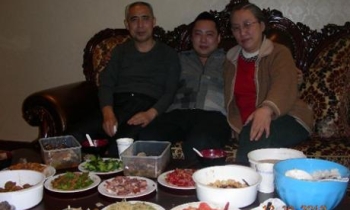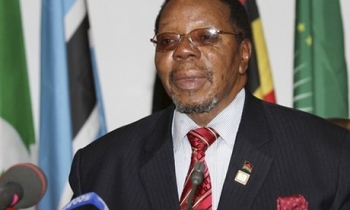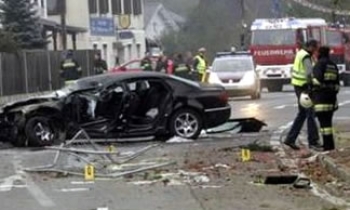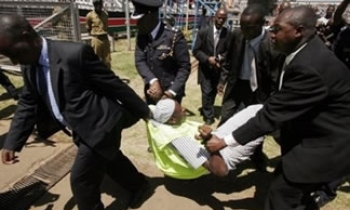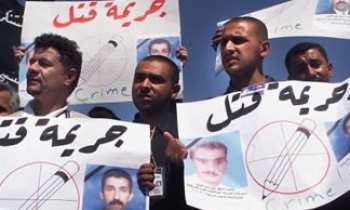In Colombia reports of attacks on the press do no buck the trend. The pattern this year has been one of issuing threats and making a journalist flee his/her city of work. Six journalists have had to flee this year, a seventh was kidnapped, and another murdered.

Radio Caracol producer and host Herbin Hoyos Medina announced on July 6 that he was being forced to leave Colombia as a result of threats from a mysterious Action and Justice Front for Freedom and Democracy, probably a group of former rightwing paramilitaries, according to Reporters sans Frontières (RSF).
"Although officially disarmed, many paramilitaries are turning into criminal gangs disguised as humanitarian groups," RSF said. "The situation is having a terrible impact on the press, which is in danger of extinction in many regions as more and more journalists are forced to leave."
A RSF statement said, "Herbin Hoyos' case recalls that of Hollman Morris of the Canal Uno TV station, who was recently forced to flee abroad after being threatened by the mysterious Social Front for Peace, another paramilitary creation. It is not enough to dismantle the armed groups of the far-right. The government, intelligence services and judicial authorities must ensure that the former paramilitaries really do give up their weapons."
Hoyos, who hosts a programme for Radio Caracol, Las voces del secuestro (The Voices of Captivity), produces another, Amanecer en América, and covers Colombia's civil war," went to Cómbita prison in the central department of Boyacá in June to do a report on the prison conditions of people convicted of drug trafficking who are awaiting extradition to the United States (US).
He interviewed several detainees in their cells who told him their extraditions were being organised by the judicial police, the intelligence agency known as the Administrative Department for Security (DAS), and informants working for the US Drug Enforcement Administration who seemed to think they were drug kingpins "or even Al-Qaeda collaborators." Hoyos began receiving death threats by email a few days later.

On July 2, he was given an ultimatum by the Action and Justice Front for Freedom and Democracy: "There is no point defending delinquents who have done harm to Colombia. He who hangs out with losers is a loser too." Threatening both Hoyos and those close to him, the message ended: "You have 72 hours to leave the country." Hoyos announced his departure from Colombia four days later.
Like most journalists in Colombia, Hoyos has had his brushes with danger in the past. He had been kidnapped from Radio Caracol's studios on March 13, 1994 by leftwing guerrillas of the Revolutionary Armed Forces of Colombia (FARC) and was freed two weeks later by the army. Since then he has dedicated a lot of his work to covering the cases of people who are taken hostage – currently about 3,000 – in the course of a civil war that has gone on for 46 years. He has a permanent police bodyguard since 2002.
Threats have also been issued against press freedom group Fundación para la Libertad de Prensa (FLIP). An unknown group calling itself Frente Democrático Colombia Libre (Free Colombia Democratic Front) sent emails on June 7 to FLIP and other civil society groups, accusing them of having ties with guerrillas, and declaring them military targets. Perceived ties to leftist guerrillas, government security forces, or paramilitary groups can put Colombian journalists at great risk. According to the Committee to Protect Journalists (CPJ), journalists have been threatened, attacked, and murdered for perceived links to these three groups in Colombia's civil war.
The threatening emails were addressed to "revolutionaries disguised as NGOs, supposed leaders, lawyers, and journalists masked as civilians hidden behind their columns." They described the organisations as fronts for guerrillas, and accused them of discrediting Colombia's image abroad. In Colombia, "there is no conflict or war, there is just a group of guerrilla revolutionaries that favor the continuous violation of people's rights," they said.
Threats were also received by Iván Cepeda, a columnist for the weekly El Espectador, a human rights group, Colectivo de Abogados José Alvear Restrepo, and two universities, Universidad de Antioquia, and Universidad Nacional. The emails dismissed recent bomb threats made against journalists in Barranquilla, which it attributed to the leftwing guerrilla group, FARC.

On June 3, two packages were delivered to the homes of Armando Benedetti Jimeno and Ernesto McCausland Sojo, columnists for El Heraldo de Barranquilla. The packages contained clocks and wires, meant to look like bombs, the Colombian press reported. Benedetti, who was minister for communications from 1994 to 1998, told CPJ that the packages also contained notes warning them "don't stick your nose in things that are none of your business. Next time, I will make it explode."
Two days later, another package was sent to the daily's director, Gustavo Bell Lemus, who was Colombia's vice-president from 1998-2002. The three journalists have recently criticised corruption in the local government, said the local press.
National and local authorities launched an immediate investigation into the threats against El Heraldo de Barranquilla, and reinforced security for the three journalists. On June 6, the government offered a reward of 100 million pesos (US$42,000) to anyone with information that could lead to the arrest of those responsible.
"We are alarmed by the widespread threats against journalists and nongovernmental organisations in Colombia," said then CPJ Executive Director Ann Cooper. "We call on President Alvaro Uribe to publicly condemn these shocking acts of intimidation, to provide the necessary measures to allow Colombian journalists to continue to do their job in safety, and to urge the attorney general to investigate every threat."
In May, Pedro Antonio Cárdenas Cáceres, director of the biweekly La Verdad, was forced to flee his hometown of Honda after getting death threats in the wake of his reports on government corruption in central Tolima province. Cárdenas left for Bogotá with his family on Saturday after finding funeral flowers in front of his house on May 7 and 8, he told CPJ. Cárdenas believed the threats were linked to investigative stories on local government corruption, which were published in La Verdad on April 15 and April 30.

On March 12, 2003, he was abducted from his home and taken to a nearby motel by several armed men who identified themselves as members of the rightwing paramilitary group Autodefensas Unidas de Colombia. Cárdenas, then host of a local news programme in the national RCN radio network, was freed when local police intercepted and arrested the kidnappers a few hours later. Cárdenas had received threats directly linked to his critical reporting on local government corruption days prior to his kidnapping. He left the country for more than a year, and returned to Colombia in August 2004, spending 16 months in Bogotá before going back to Honda in January. Cárdenas had police protection since his return.
Diro César González, who published the weekly La Tarde, was forced to relocate to Bogotá in January after receiving death threats. He also suspended publication of his newspaper, which published investigative reports on corruption, the armed conflict, and paramilitary activities in northeastern Santander province. In February, reporter Olga Cecilia Vega was forced to leave the province of Caquetá after her life was threatened following a published interview with a guerrilla leader. The same month, Antonio Sánchez Sánchez of the daily El Meridiano de Córdoba was forced to leave the north-western city of Montería because of death threats. In March, Jenny Manrique a reporter for the newspaper Vanguardia Liberal fled the city of Bucaramanga, also in Santander, after getting death threats for reporting on abuses by rightwing paramilitary forces.


